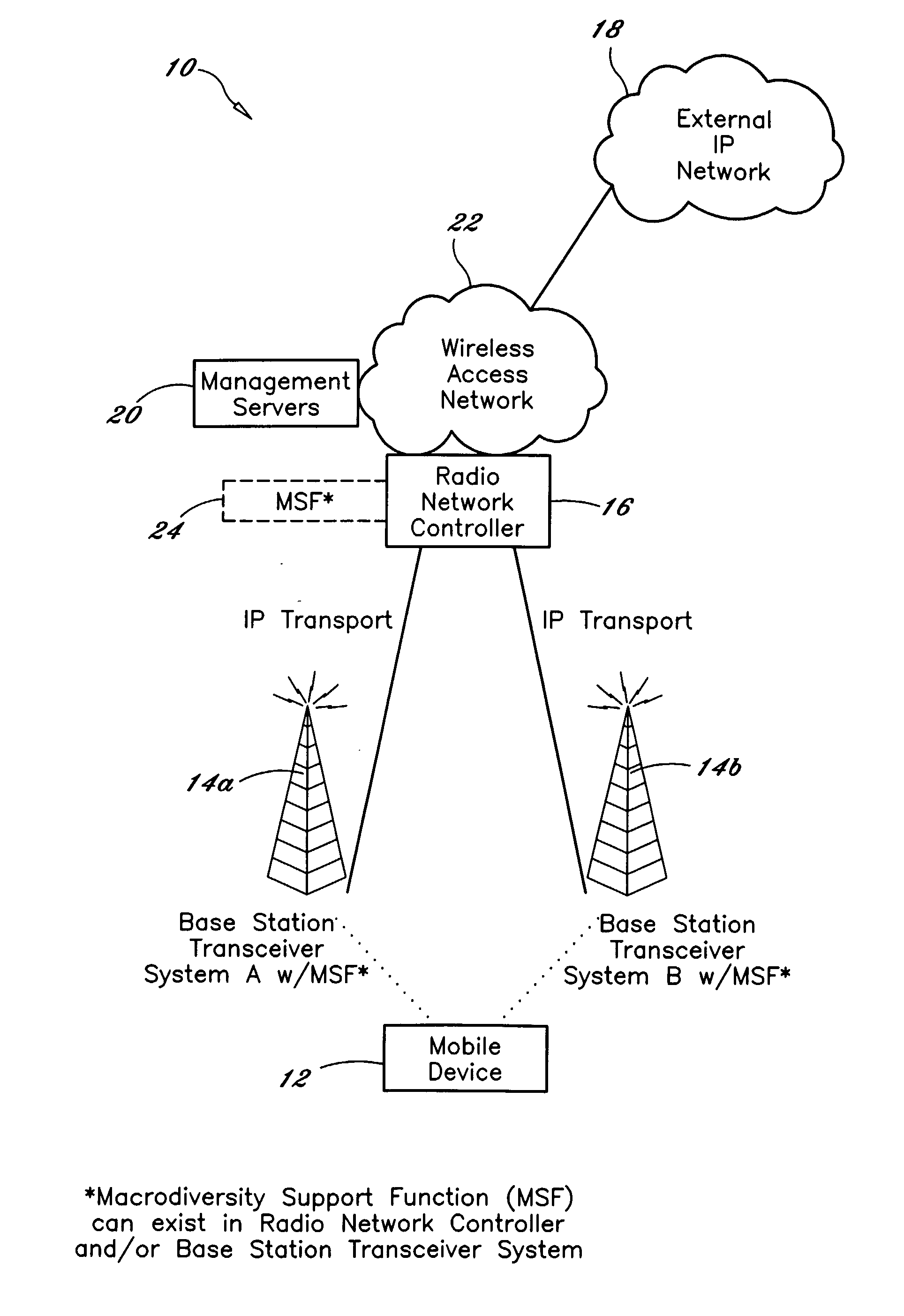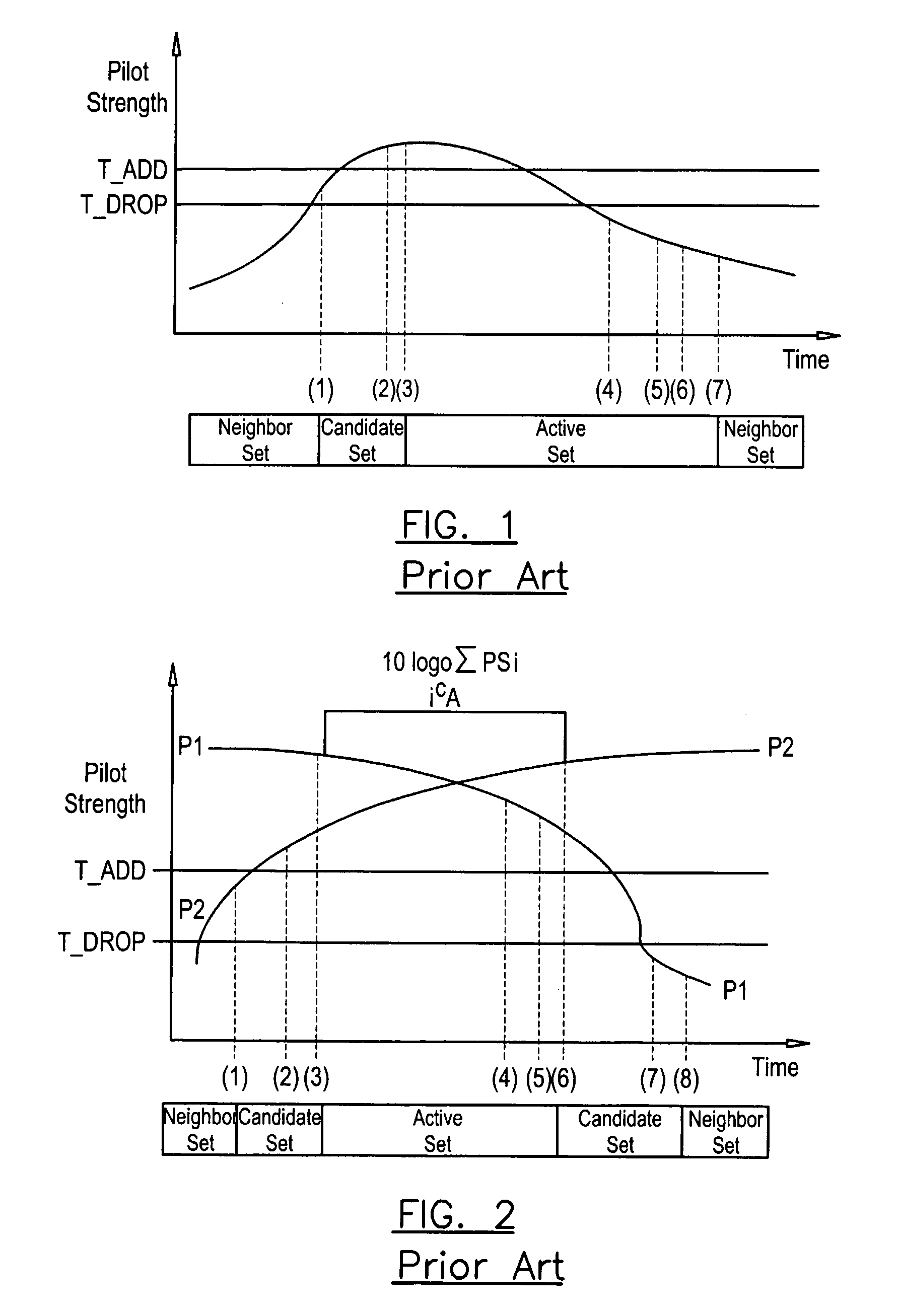Method and System for Soft Handoff in Mobile Broadband Systems
a mobile broadband and soft handoff technology, applied in the field of mobile broadband cellular communication systems, can solve the problems of increasing the interference seen by all users within the coverage area of those btss, sho may be triggered, and consumption of resources, so as to improve the coverage performance
- Summary
- Abstract
- Description
- Claims
- Application Information
AI Technical Summary
Benefits of technology
Problems solved by technology
Method used
Image
Examples
Embodiment Construction
[0054]Referring now to the drawing figures in which like reference designators refer to like elements, there is shown in FIG. 3 a diagram of an exemplary system constructed in accordance with the principles of the present invention, and designated generally as 10. System 10 includes a mobile device 12 arranged to wirelessly communicate with one or more BTSs 14a and 14b (BTSs 14 are generally referred to herein as BTSs 14) in which the BTSs 14 and the mobile device 12 support soft handoff. The mobile device 12 supports a high level communication protocol such as the Internet Protocol (“IP”). The BTSs 14 in turn, communicate with a Radio Controller 16, i.e., Radio Network controller (“RNC”), Base Station Controller (“BSC”) or a server with similar functional support, e.g. mobility, macro-diversity, security via an internal communication network. As used herein, the RNC 16 represents this controller. The RNC 16 provides high level protocol support with external communication networks 1...
PUM
 Login to View More
Login to View More Abstract
Description
Claims
Application Information
 Login to View More
Login to View More - R&D
- Intellectual Property
- Life Sciences
- Materials
- Tech Scout
- Unparalleled Data Quality
- Higher Quality Content
- 60% Fewer Hallucinations
Browse by: Latest US Patents, China's latest patents, Technical Efficacy Thesaurus, Application Domain, Technology Topic, Popular Technical Reports.
© 2025 PatSnap. All rights reserved.Legal|Privacy policy|Modern Slavery Act Transparency Statement|Sitemap|About US| Contact US: help@patsnap.com



